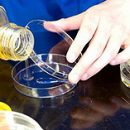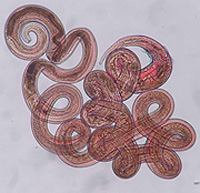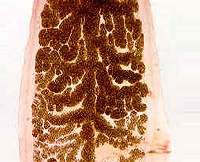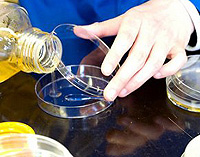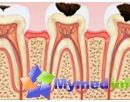What is giardiasis? How to diagnose giardiasis? How is the treatment of giardiasis? Answers to these questions you will find in the article.
Content
Giardiasis
Giardiasis (Giardiaz, Zhairdiaz, Giardiosis) - Human parasitic infection,
often occurring as asymptomatic parasifiasis; may manifest
impairment of the gastrointestinal tract and dyskinesia of biliary tract.
The causative agent is the flagella of Giardia parasitizing in thin
intestine and biliary paths. In the body of the host exists
in vegetative form and in the form of a cystic allocated outside with feces.
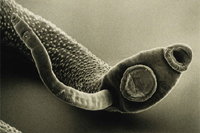
Giardiasis is common widespread. Source of giardiasis - infected person or animal. The main way of infection with giardiasis - dirt getting into the mouth,
Through contaminated hands, toys, food and water. Giardiasis is registered among
All age groups, main contingent - children of preschool age. Cystes
Giardia is still saved in the external environment (up to 2-3 months).
The probability of the development of the disease depends on the virulence of the pathogen, infectious
doses, hydrochloric acid formation in the stomach and immune status of an individual.
Giardiasis develops after penetration of several (up to 10) cyst.
In the body of CheLovek they multiply in a huge amount (1 cm2
The intestinal mucous membrane can be up to 1 million giardia and more). Vegetative
Forms parasitize on the surface of the mucous membrane of the top separation
guts, breaking digestion.
With giardiasis, the processes of assimilation of fats, carbohydrates and vitamins are disturbed.
In greeted ducts, Giardia quickly die under the action of yellow. Frequent detection
With duodenal sensing, it is associated with the ingress of giardia from the walls of the duodenum
Kiska. However, due to the violation of the motility of biliary tract
Promotes the accession of secondary bacterial infections. The duration of the incubation period is 1-3 weeks.
Acute form of giardiasis: characterized diarrhea duration of
5-7 days to several weeks, reducing body weight and signs
chronic intoxication (blue eyes under the eyes, headache,
fatigue). Unformed chair, bold, fetid, meteorism. W
Adolescents are more often dominated by signs of dyskinesia of biliary tract:
abdominal pain, liver increase, constipation. In young children
quickly formed impaired intestinal suction syndrome (not
absorbs sugar, fats and vitamins) with the addition of allergic
Reactions. Part of the patients may be self-excitation.
Chronic shape of the giardiasis proceeds in the form of periodic exacerbations characterized by bloating,
diarrhea, pain in the opposite region
Diagnosis of giardiasis
- Duodenal sensing. Introduction of the probe in the duodenum in order to obtain its contents.
- Lambian detection in Kale. With sharp forms, the selection of the parasite begins
from the 5-7th day of the disease. In chronic forms, the selection of the cyst is periodic
character, therefore, research is recommended to confirm the diagnosis
Fitting at intervals in 1 week for 4-5 weeks.
Treatment of giardiasis
- Recommended diet with limited content of fats, sweet and dairy
Products (Giardia perfectly breed in a sweet environment).
- Mepacrin - for 5 days adults 100 mg 3 p / day, 2 mg / kg children
3 p / day (up to 300 mg / day)
- Metronidazole - for 5 days adults 250 mg 3 p / day, children 15 mg / kg / day
in 3 reception
- Tinidazole - for 7 days adults 2 g / day once, children 50-60 mg / kg / day
in 3 reception
- Furazolidon - for 7-10 days adults 100 mg 4 p / day, children 6 mg / kg / day
in 4 reception
Treatment for several days. In cases of immunity and recurrent
The cure current reaches a repeated course of treatment with the use of another drug.


